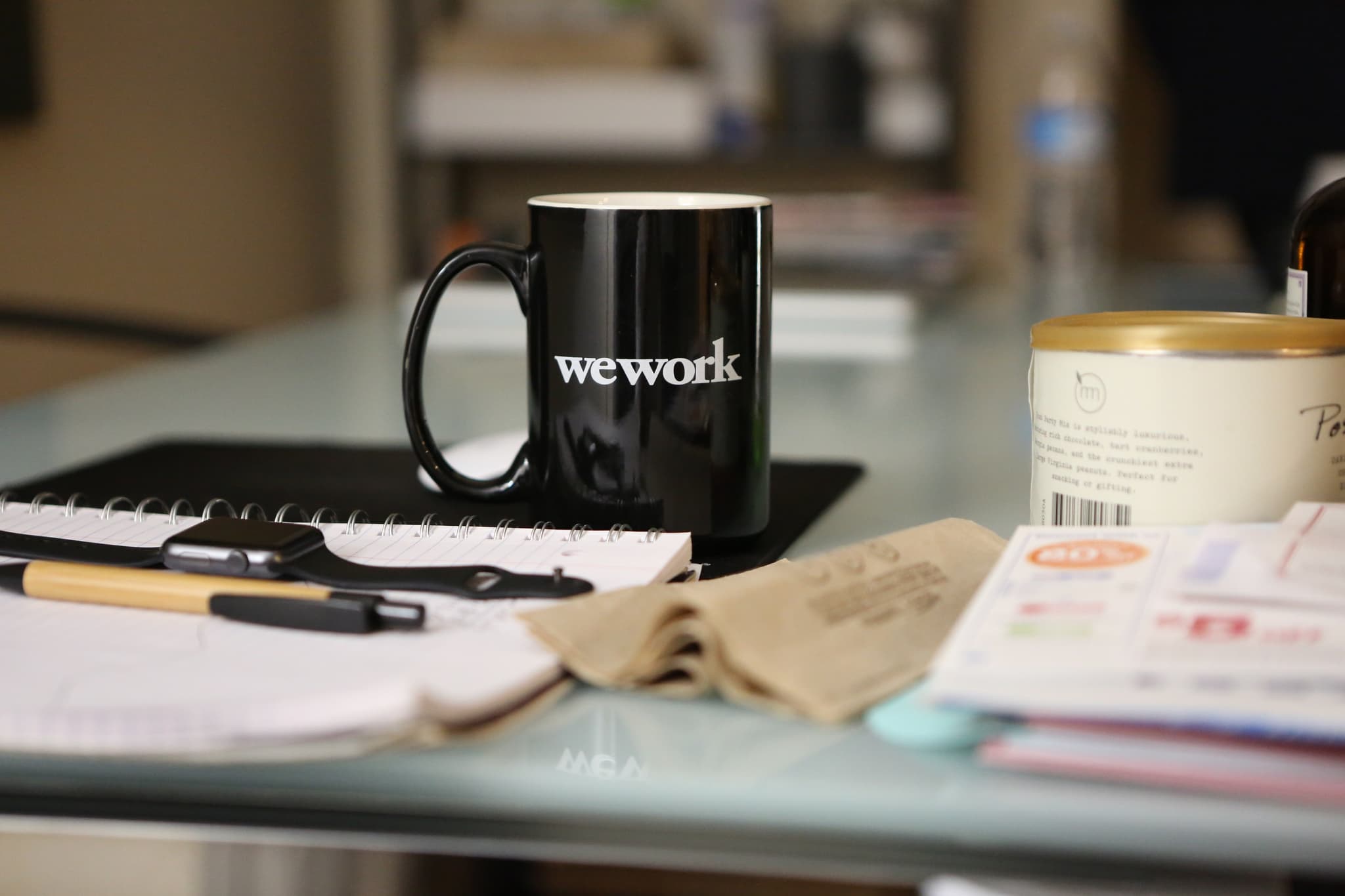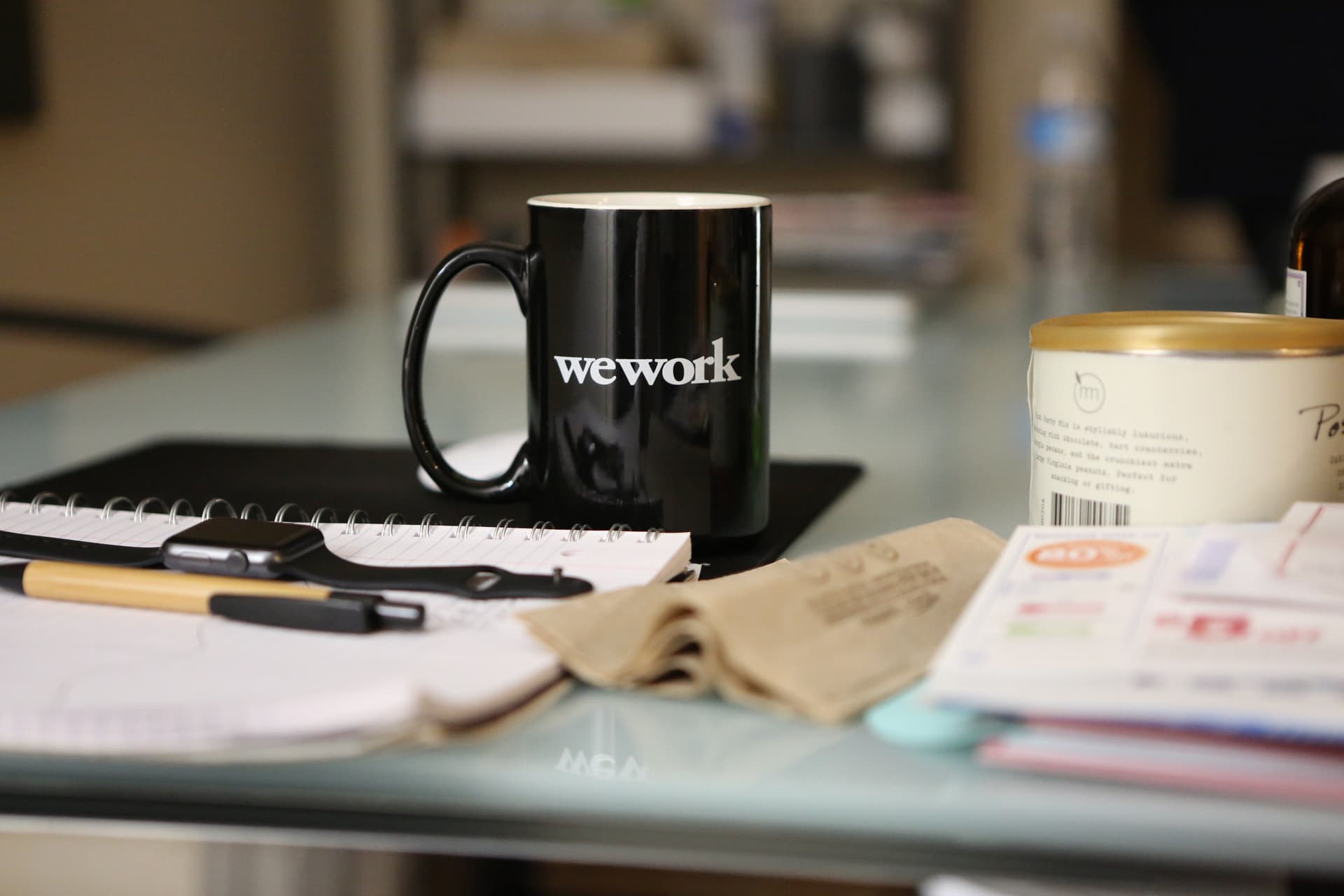This post originally appeared in In Real Life, one of our founder’s personal blogs.
WeWork made big headlines last week after its Interim CEO said “substantial doubt exists about the company's ability to continue,” effectively precluding bankruptcy. The stock plunged to near a dime — the company once worth nearly $47B now trades for just a few hundred million.
Most of the press on the topic tied the announcement to the broader decline of the office market (which I’vewrittena bit about). So the story goes: WeWork raised big money on big hype, belly-flopped into public markets when internal strife turned to external disillusionment (first with an attempted IPO, then later via SPAC), then faced a double-whammy when COVID hit the office market and people holed themselves up at home.
The story is mostly correct, except for that last part.
As it turns out, while COVID has decimated the office market broadly, the “flexible office” category, which WeWork plays in, is benefiting tremendously from the post-pandemic hybrid work transition.
FromAxios:
On the same day WeWork's announcement raised eyebrows, rival IWG (the second largest company in co-working)posted a 48% surgein half-year profits.
Market Reports Worldputs the size of the [flexible office] market above $14 billion, and forecasts a compound annual growth rate of over 17% until 2028.
The truth about WeWork’s demise is not that they don’t have a stellar product that is much in demand. In fact - it’s never been more in demand.
It’s just that the business is fundamentally screwed by poor financial choices made years ago, choices that cannot be erased. Ten, twenty year leases signed at the peak of the office market. Massive capital expenditure on renovations & build-out, and operational complexity that wasn’t nearly as scalable as investors originally thought (or, avoided thinking about).
So — what did we learn from WeWork?
Why companies lease office space to begin with
Most companies don’t own their office buildings, they lease them. Why is that?
Well, as a business owner, you invariably take on risk. Any number of things could go wrong, and so your job is to control that risk as much as possible.**The way that’s done is that you try to mitigate any risk that is not“core” to your business.
Core business risks may include those that:
- Are directly tied to the success of the business (the meat and potatoes of what you sell)
- You have a unique advantage in overcoming (the secret sauce that makes your meat and potatoes good)
Core business risks are risks you want to lean into; they are the risks that make the business worth going into. For example, if you run a juice shop and have a killer lemonade recipe, the risk that people don’t like your lemonade is one you’re willing to accept. You believe that recipe is critical to your business success, and you think you are uniquely equipped to beat competitors at it.
But everything else, you want todeferas much as possible.
The risk that one of your employees trips and falls in the shop, the risk you don’t have the cash to meet accounts payable, the risk you get robbed or a giant tornado comes into town and destroys all your equipment.
For all these risks, third-party vendors provide intermediary protection. Insurance companies, banks, and, yes, landlords.
Because one of those risks is your physical space. Imagine you own your building. The value of your property fluctuates, and sometimes it fluctuates a lot. This fluctuation has nothing to do with your lemonade business — it’s related to macroeconomic factors completely beyond your control.
But, it may affect you. For example, you want to raise some money to expand the business. Investors look at your assets and get concerned about the value of your property and the liability of your monthly mortgage payments. So now, macroeconomic real estate trends are preventing you from expanding your lemonade business. You know nothing about real estate; it’s not related to your business and you have no unique advantage in overcoming this risk.
So, you defer that risk to a third-party landlord.
You lease your space, giving yourself the flexibility to easily leave. Sure, you won’t benefit in the upside of the space appreciating in value, but that’s not the business you’re in, and calculating and measuring that risk is distracting to what you really should be focused on, selling lemonade.
When it comes to office buildings, the story is no different. Office buildings carry tremendous risk. They are heavy assets that go through regular macro-economic boom-and-bust cycles. They change in value for reasons most tenants would have no understanding of. Most companies avoid the risk associated with those cycles and stay focused on what they’re good at.
WeWork and Southwest Airlines
But WeWork came along and said — hey, because we’re going to be here for a while, and the risk of this assetisrelated to our core business (that is: our product kind ofisthis space), wouldn’t it make sense for us to take onmoreof that risk? To bear in the upside and take a little more downside in return?
To do that, they decided to take on extra-long leases that allowed them to negotiate lower rents and more landlord concessions. They were betting on their own product being successful, and because they were a company of many real estate people, they believed they did have a unique advantage in overcoming physical space risks.
The logic is sound. WeWork taking on longer leases was arguably no different than Southwest Airlineshedging fuel prices in the early 2000s, a move that turned out to pay off remarkably as competitors suffered and were forced to make cuts during the Great Recession. Fuel is a core variable input to Southwest’s product (one of its largest annual expenses), just as office space is to WeWork’s.
Of course, in Southwest’s bet was a belief that they had the expertise and unique ability to predict how much fuel they’d need and where future prices might go to. Southwest built out an incredibly sophisticated organization around this, so much so that fuel hedging became a core strategic component of their business.
From Southwest’swebsite:
In January 2001,The Wall Street Journaldeclared that Southwest had developed a “state-of-the-art” hedging platform unrivaled by its competitors… From 1998 to the summer of 2008, Southwest saved an estimated $3.5 billion over what it would have spent if it had paid the industry average for jet fuel.
WeWork, in signing long office leases, was trying to do the same thing. Of course they could not perfectly predict where office rents would go, but they only needed to be marginally better than competitors — i.e., landlords — in order to be successful.
Throw a bunch of smart people in a room and run every financial scenario possible, and it’s not a crazy idea.
Where WeWork went wrong
The problem was that WeWork did not build out a sophisticated ‘lease hedging’ operation like Southwest did with fuel.
Reading the horror stories of what was going on on the inside, it’s not hard to understand how this happened.Business expansion at WeWork, including new lease signings, was not driven by calculated financial expertise, but rather, the blinding light of ego and money.
And that’s because WeWork was not invested in like a real estate investment trust. They were invested in like a Silicon Valley tech company. Those are very different investors!
Adam Neumann had a blank check to do whatever he wanted to do. The venture capitalists who invested in him turned a blind cheek and allowed an incredible degree of uncalculated — that’s a step below mis-calculated — risk to be taken.
From one of my favoritepieceson the topic (back from 2020, and worth reading in full):
Another former high-ranking WeWork executive, who regularly participated in board meetings, told me, “If you review the minutes of our board meetings, you would see that never has there been a board vote that wasn’t unanimous.There was never a budget plan, or a growth plan, that wasn’t approved unanimously.If board members had concerns, they never once officially said them.”
So where do we come out now?
So WeWork wasn’t totally wrong, but they went too far, too fast. Their growth was not calculated, and ultimately it came back to bite them in the ass.
Today, the pendulum on what’s expected has swung back, and we’re ending up in sort-of a happy medium.
Coworking centers and space operators like IWG (Regus) no longer take on long risky leases. In fact, they mostly try not to take on leases at all.
But, to not take onanyof the risk of the space wouldn’t be right either. After all, their product is the space, so it wouldn’t quite make sense for landlords to pay them like they do their property managers (a fixed amount each month), who are not selling or marketing the space, just maintaining it.
So instead, these “space operators” take on a revenue-share agreement, where they transact rent from tenants and keep a small share for themselves in return for operating and marketing the space.
In this case, if office demand declines, the operator does face downside. But, they’re not takingallthe risk — they might lose some revenues, but because they aren’t indebted to lenders (or landlords via long leases), they won’t be forced out of existence the moment the markets hit a down-cycle.
And that matters because if they take onallthe risk, there is no way they could ever expand broadly (Neumann pulled it off once by fooling VCs - but they sure aren’t playing that game again).
Because scale matters — there are network effects to having a brand that exists in more than one geo — it’s imperative that they don’t ownallthe risk. When they do, consumer value is being left on the table.
That’s why this happy medium is probably a better outcome: companies who operate and maintain space shouldn’t also be in the business of investing in them as landlords do, but they also shouldn’t be totally immune to the risk of low-tenancy.
Why all this matters
At the end of the day, this isn’t really about coworking.
The office isevolving into a tool. Tenants no longer need 1 seat per employee — they could choose 0.7 or 0.5, or none. That means they have a choice when they buy the good, and they will be choosing based on what the tool is capable of doing and what outcomes it promises to deliver.
As this transition occurs, office space will become more like hotels — a differentiated good that comes in many shapes and sizes, with different brands catering to different needs. The office as a commodity good is no longer, and that’s all because of hybrid work.
With differentiation comes the need for new ways of accessing and using space, which is something most landlords are not capable of. Enter new companies, like coworking providers. And these companies have to be set up to succeed.
In short, the future of the category — not just flex, but the whole office market, really — depends on us learning from what went wrong with WeWork.





